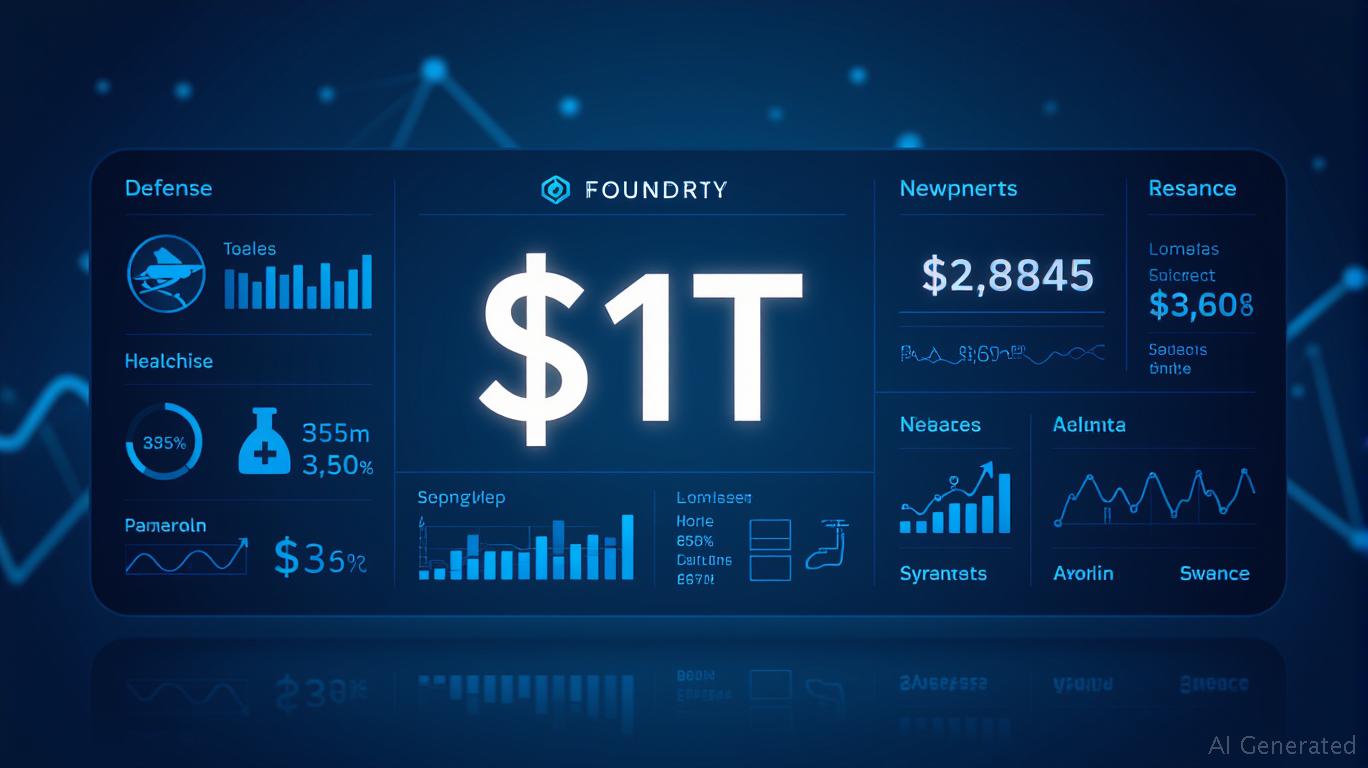Samuel ReedSunday, Jul 6, 2025 6:15 am ET
![]() 64min read
64min read
In the first half of 2025, Palantir Technologies (PLTR) surged 80%, outpacing the S&P 500 and Nasdaq to become one of the year's top performers. With a market cap now exceeding $340 billion, investors are now asking: Could Palantir's AI-driven growth and margin expansion push it toward a $1 trillion valuation by 2035? The answer hinges on three critical factors—its AI platform dominance, operational efficiency, and whether its sky-high valuation can endure.

AI-Driven Growth: The Engine of Expansion
Palantir's core strength lies in its AI-powered platforms—Gotham, Foundry, Apollo, and its AI suite—which integrate and analyze vast datasets for governments and enterprises. In Q1 2025, revenue jumped 39% year-over-year to $884 million, with commercial revenue soaring 71%, signaling a successful pivot beyond its traditional government contracts. The company now projects U.S. commercial revenue to hit $1.178 billion annually, a 68% increase from 2024.
The geopolitical climate further fuels demand. With governments like NATO adopting Palantir's tools for defense and logistics, and corporations relying on its AI for supply chain optimization and fraud detection, the company sits at the intersection of two megatrends: public-sector modernization and enterprise AI adoption.
This chart would show Palantir's revenue growth accelerating from 24% in 2020 to 39% in Q1 2025, highlighting its compounding momentum.
Margin Expansion: Profitability at Scale
Palantir's net income nearly doubled in Q1 2025, rising to $214 million from $105.5 million in Q1 2024. This reflects not just top-line growth but improved efficiency. The company's adjusted operational income for Q2 2025 is projected to grow 58–60% year-over-year, suggesting margins are widening as fixed costs are spread over larger revenue streams.
The path to $1 trillion hinges on whether this margin expansion can continue. With automation and AI reducing per-client servicing costs, Palantir could achieve operating margins exceeding 30% within five years—a level that would make its valuation more sustainable.
Valuation Sustainability: A High-Wire Act
Palantir's current valuation is 108.76x its 2025 revenue guidance of $3.89 billion. For context, Microsoft trades at 13x sales, and Salesforce at 7x. This premium assumes Palantir can grow revenue 10x by 2035, requiring a 15–18% annual revenue growth rate.
This chart would illustrate Palantir's valuation rising from $4.5 billion in 2020 to $340 billion in 2025—a 7,500% increase—highlighting its meteoric rise.
The risk? Overvaluation. If AI adoption slows, competition intensifies, or geopolitical tailwinds fade, the stock could correct sharply. Competitors like Databricks and Snowflake are also vying for enterprise analytics market share, and Palantir's reliance on large, complex client implementations could limit scalability.
The Trillion-Dollar Case: Is It Plausible?
To reach $1 trillion by 2035, Palantir would need to sustain 12–14% annual market cap growth from its current $340 billion valuation. Here's how it could happen:
- AI as a SaaS Model: Transitioning to subscription-based pricing for its platforms could boost recurring revenue and predictability.
- Global Government Contracts: Expanding beyond the U.S. and NATO to emerging markets, where defense and infrastructure spending is rising.
- Margin Leverage: Achieving 30%+ operating margins by 2030, which would align its valuation with mature tech giants.
Even with these factors, a $1 trillion outcome depends on avoiding execution missteps. A misfire in product development or a regulatory crackdown on AI could derail momentum.
Investment Takeaway: A High-Reward, High-Risk Bet
Palantir's trajectory is compelling, but its valuation leaves little room for error. For long-term investors willing to bet on AI's transformative potential and Palantir's execution, the stock remains intriguing. However, the high price-to-sales ratio and volatile stock history (e.g., a 12% drop after Q1 earnings) demand caution.
Historical backtesting adds perspective: A strategy of buying PLTR five days before quarterly earnings and holding for 20 trading days from 2020 to 2025 generated an average return of 54.2%, but with a maximum drawdown of 31.4%. While the strategy outperformed the stock's baseline volatility, it underperformed the broader market by 54.42% over the period, highlighting the need for disciplined risk management.
This chart would show PLTR's stock rising from $5 in 2020 to over $130 in 2025, far outpacing the S&P 500's gains.
Bottom Line: A $1 trillion valuation by 2035 is mathematically possible, but only if Palantir's AI growth and margin improvements outpace its sky-high expectations. Investors should consider dollar-cost averaging into the stock and monitor margin trends closely. For now, the AI boom has given Palantir a seat at the table—but the journey to $1 trillion will require sustained excellence in execution.







 English (US) ·
English (US) ·